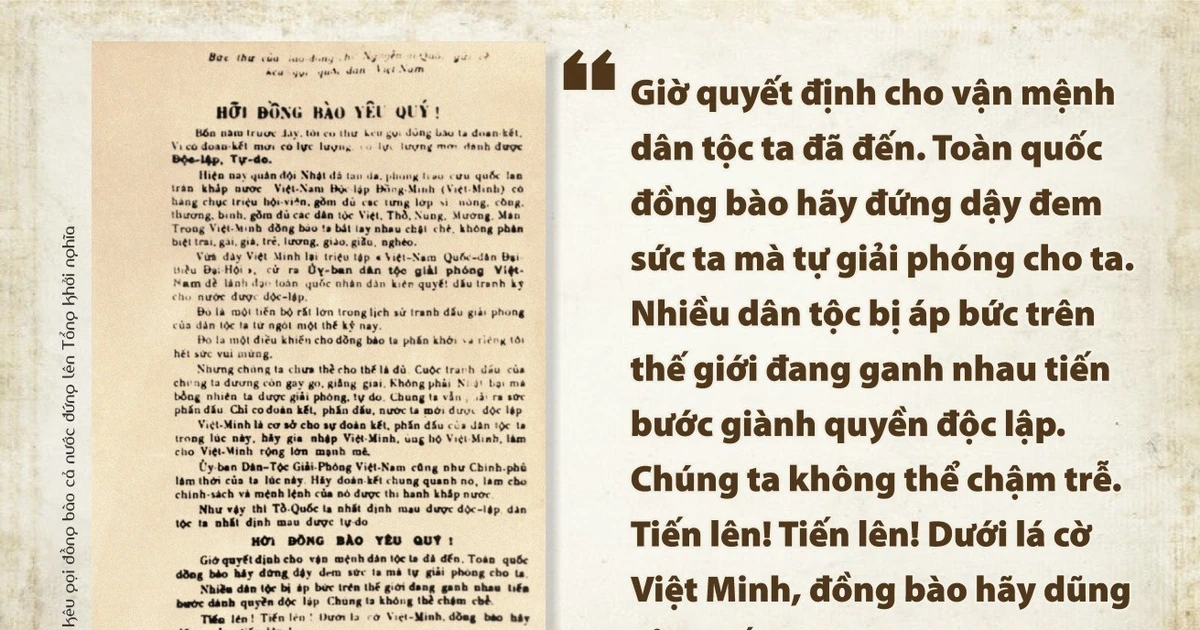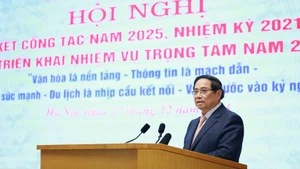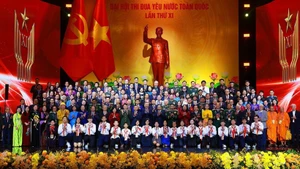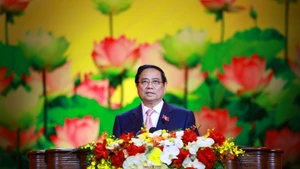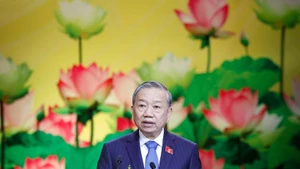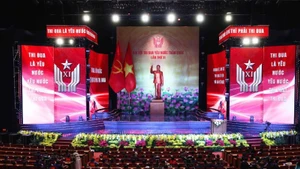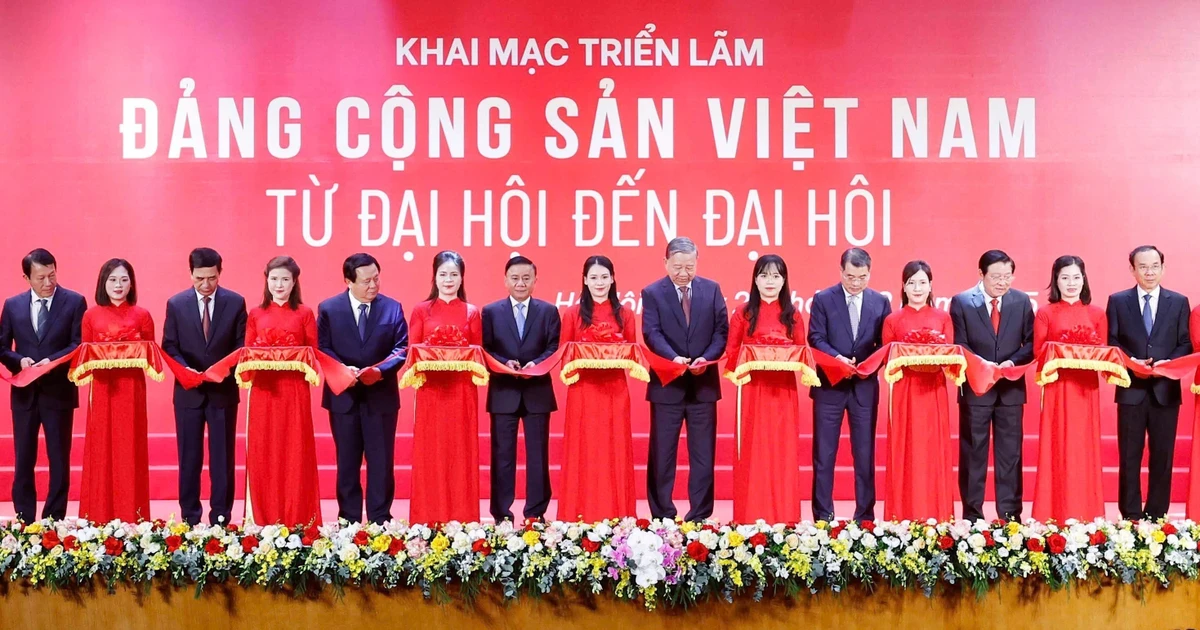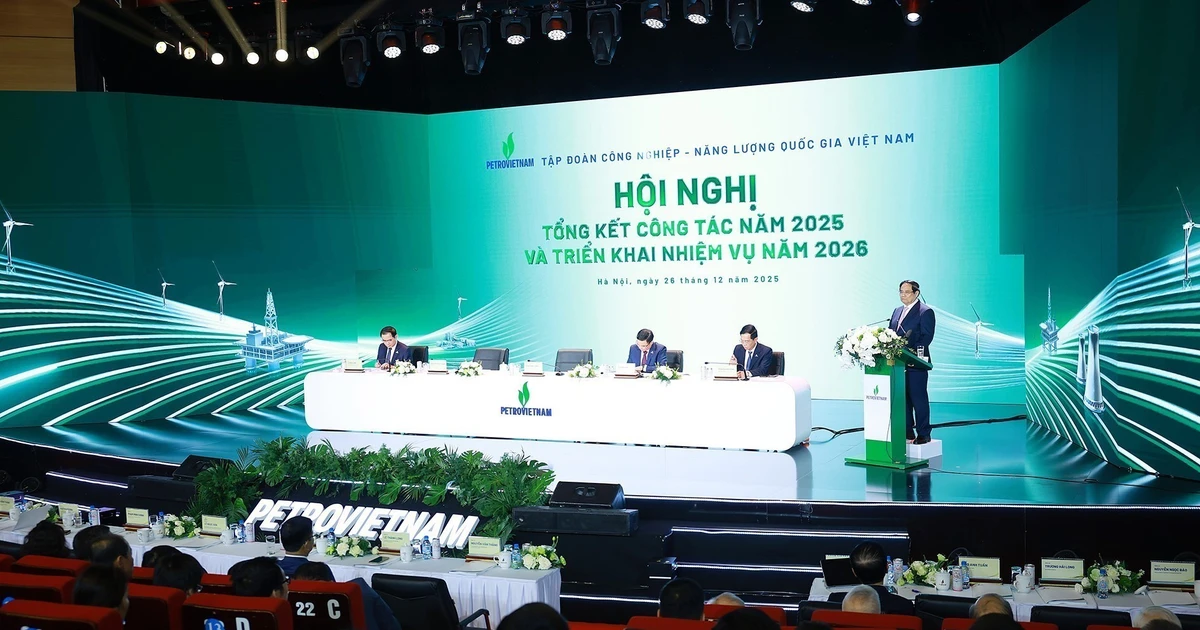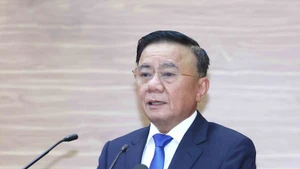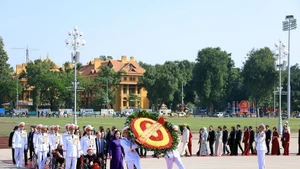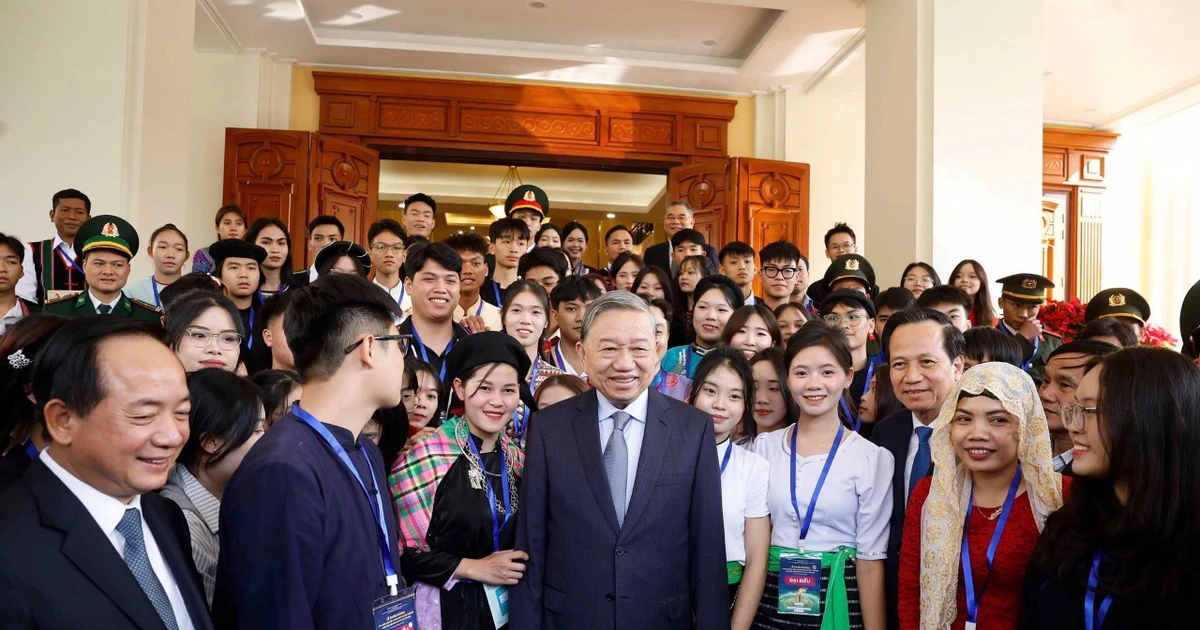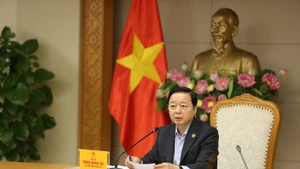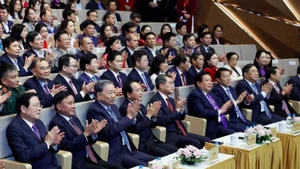He also emphasised that the fight for national independence would remain arduous and prolonged, stating, “we will not suddenly be freed and liberated just because Japan has been defeated. We must continue to strive. Only through unity and effort will our country achieve independence.” He encouraged the people to join and support the Viet Minh forces, to unite around the Viet Nam National Liberation Committee, and to reclaim the country’s independence. At the end of the letter, he passionately appealed: “The decisive hour for our nation’s destiny has arrived. People around the whole country, rise up and use our own strength to liberate ourselves. Many oppressed nations around the world are striving to gain their independence. We must not delay. Forward! Forward! Under the Viet Minh flag, let our people bravely march ahead!”
In Ha Noi, preparations for the revolution were reaching a fever pitch. While the uprising was breaking out in the suburban areas, 3,000 workers demonstrated in front of the French Governor-General’s office, shouting slogans: “Support the Viet Minh,” “Down with the Puppet Regime.” At the same time, all political prisoners at Hoa Lo demanded their release so they could immediately join the uprising. Thousands of workers and residents of Ha Noi protested for the release of two Avia Company workers who had been arrested while transporting weapons from Gia Lam into the city with Japanese vehicles, forcing the authorities to relent. On the night of August 18, a Vanguard Propaganda Team broke into the printing house of Tin Moi (Breaking News) Newspaper, guiding workers to print leaflets and posters calling for the uprising. Red flags with yellow stars fluttered across the streets of Ha Noi, from Buoi, through Dich Vong, down to Tuong Mai and Mai Dong. The entire city was alive on the eve of the revolt.
In Bac Giang, around 4 am, comrades Ho Cong Du and Ninh Van Phan led a self-defence squad of six or seven armed members from Song Khe communal house to storm the office of provincial governor Nguyen Ngoc Dinh at 6 am, compelling him to surrender and hand over all weapons and the security barracks to the revolution. Revolutionary forces immediately took control of the barracks, seizing nearly 200 firearms. The chief of security and most of the soldiers requested to join the revolutionary armed forces. By 7 am, red flags with yellow stars waved proudly over the governor’s office and the barracks.
The Japanese military command in Bac Giang, learning that the Viet Minh had risen and seized Phu Lang Thuong town, entered into negotiations with the Viet Minh. Under the agreement, the Viet Minh forces took full control of Bac Giang Province and maintained security; Japanese troops stationed elsewhere in the province had to regroup at Cau Lo (Luc Ngan) and Phu Lang Thuong, forbidden from carrying weapons in the streets or transporting rice elsewhere.
While negotiations with the Japanese were ongoing, self-defence units and local people from the districts of Lang Giang, Viet Yen, Yen The, Yen Dung, and Hiep Hoa marched into the town to demonstrate their strength. Red flags and banners filled the streets. The puppet government apparatus had been completely dismantled. The uprising to seize power in Bac Giang Province was a total success.
In Ha Tinh, the Nam Ha Sub-Regional Uprising Committee simultaneously instructed the Japanese forces stationed in Ha Tinh town not to interfere in local affairs and mobilised people from the town and neighboring districts Thach Ha and Cam Xuyen to besiege the provincial seat. Provincial Governor Ha Van Dai accepted surrender, signing over authority along with all records, seals, weapons, and funds to the revolution. The takeover of Ha Tinh provincial administration was swiftly accomplished on the morning of August 18, 1945. By noon, revolutionary crowds, carrying banners and slogans, gathered at Ha Tinh town stadium to solemnly witness the inauguration of the provincial provisional revolutionary government, chaired by comrade Tran Huu Duyet.

News of the successful uprising in Ha Tinh town quickly spread across the province and the country. On the afternoon of August 18, 1945, the uprising committees in Ky Anh and Duc Tho districts led armed masses to demonstrate and besiege district offices. All district chiefs complied with the committees’ orders and handed power over to the people.
In Quang Nam, on the night of August 17 into the early hours of August 18, 1945, recognising the favourable turn of events, the Standing Committee of the Violent Action Committee reported to the Provincial Party Standing Committee, which immediately decided to launch the uprising. The uprising order was issued during the night, emphasising: “This is “once-in-a-thousand-years” historical destiny of our nation. All patriotic compatriots, all national salvation fighters, and Viet Minh forces at all levels across the province, arm yourselves and violently seize power into the hands of the people, sacrifice for the Fatherland, storm the consulate offices, provincial and district offices, military posts, and government buildings; force the puppet collaborators and security forces to surrender their weapons to the revolution; eradicate the traitorous Vietnamese and bring complete victory to the people.”
Shortly after, the uprising to seize power in Hoi An town swiftly succeeded. News of the takeover inspired revolutionary forces in the other districts. Subsequently, power was seized in the districts of Duy Xuyen, Dien Ban, Thang Binh, Tam Ky, Que Son, Dai Loc, and others.
